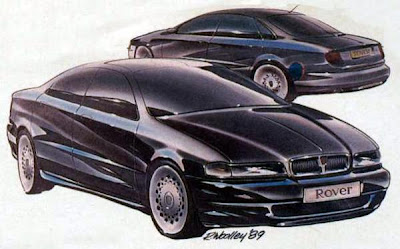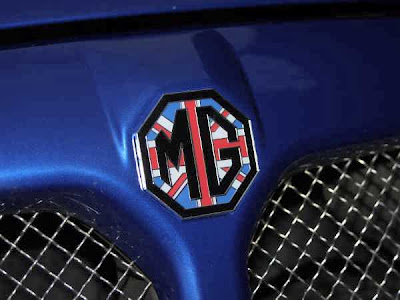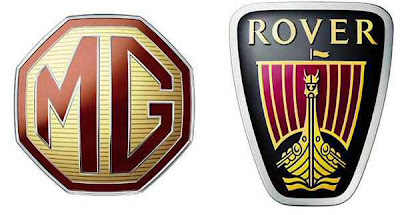Models Mg Rover 200 Series
Monday, February 14, 2011
12:29 AM
เขียนโดย
MINI Cooper Cars Blog
,
11 Comments

ป้ายกำกับ: Article , Autos , Cars , Cars Article , Cars Models , Classic Cars , Classic MG Car , Classic MG Cars , MG cars , Mg Classic Cars , Mg Rover , Mg Rover 200 , Mg Rover 200 Series , MG Rover Group , Rover , Rover 200
 Read more »
Read more »
ป้ายกำกับ: Article , Autos , Cars , Cars Article , Cars Models , Classic Cars , Classic MG Car , Classic MG Cars , MG cars , Mg Classic Cars , Mg Rover , Mg Rover 200 , Mg Rover 200 Series , MG Rover Group , Rover , Rover 200

Mg Classic CarsModels Mg Rover 200 SeriesPicture Of Mg Classic CarsMg Classic CarsModels Mg Rover 200 SeriesMg Classic Cars is a former MG British sports car manufacturer. The Rover Group plc was the name given in 1986 to the British state-owned vehicle manufacturer previously known as British Leyland or BL. Owned by British Aerospace from 1988 to 1994, when it was sold to BMW, the Group was broken up in 2000 with the Rover and MG marques being acquired by the MG Rover Group.The Rover Group's first significant new car launch was the Rover 200, which was introduced in October 1989. Unlike its predecessor, it was a three- or five-door hatchback...
MG Cars Models Mg Rover Coupe Parts 1
Friday, December 3, 2010
10:38 PM
เขียนโดย
MINI Cooper Cars Blog
,
4 Comments

ป้ายกำกับ: Honda C27 , Honda engines , KV6 , KV6 engine , MG cars , Mg Rover , MG Rover KV6 Engine , MG Rover O8 , Rover M16e , Rover M16i , Rover O8 , Vitesse , Vitesse models , Vitesse Sport , Vitesse sport engine
 Read more »
Read more »
ป้ายกำกับ: Honda C27 , Honda engines , KV6 , KV6 engine , MG cars , Mg Rover , MG Rover KV6 Engine , MG Rover O8 , Rover M16e , Rover M16i , Rover O8 , Vitesse , Vitesse models , Vitesse Sport , Vitesse sport engine

MG CarsClassic MG Cars Models Mg Rover Coupe Parts 1Picture OfClassic MG CarsClassic MG CarsMG Classic Cars Parts 1Unlike many other manufacturers who used numerical model naming systems, Rover never settled on a permanent standard for the majority of their cars. However, for the following designations are an approximate guide:* 820 – 4-cylinder 8-valve carburetted models (Rover O8)* 820e – 4-cylinder 16-valve single point injected models (Rover M16e)* 820i – 4-cylinder 16-valve multi point injected models (Rover M16i) Came in naturally aspirated form and turbocharged (Turbocharged model fitted to later Vitesse)* 825i – pre-1988 6-cylinder models...
Used Classic MG Cars Models Mg Rover 800 In 1996 - minor facelift Parts 2
Saturday, November 27, 2010
7:33 PM
เขียนโดย
MINI Cooper Cars Blog
,
2 Comments

ป้ายกำกับ: 800 series , KV6 , KV6 engine , MG Car , MG cars , Mg Classic Car , Mg Classic Cars , Mg Rover , Mg Rover 800 , MG Rover Group , MG Rover KV6 Engine , Rover 827 Vitesse , The Rover 820 Vitesse
 Read more »
Read more »
ป้ายกำกับ: 800 series , KV6 , KV6 engine , MG Car , MG cars , Mg Classic Car , Mg Classic Cars , Mg Rover , Mg Rover 800 , MG Rover Group , MG Rover KV6 Engine , Rover 827 Vitesse , The Rover 820 Vitesse

Used Classic MG Cars Models Mg Rover 800 In 1996 - minor facelift Parts 2Picture Of Classic MG Cars Classic MG CarsMG Classic Cars Parts 1The Rover KV6 engine in the 800 series was hampered by reliability issues and head gasket failures. MG Rover at the time, with no understanding of the problems simply replaced the engines. In many cases repair would not have been an option due to liner problems. The modified version of the KV6 fitted into the 75 is not an easy swap.The KV6 engine was in most cases mated to a JATCO gearbox which also in some cases suffered from reliability issues. This was sometimes due to incorrect gearbox fluid changes.The...
Used Classic MG Cars Models Mg Rover 800 In 1996 - Minor facelift Parts 1
Sunday, November 21, 2010
7:04 PM
เขียนโดย
MINI Cooper Cars Blog
,
1 Comment

ป้ายกำกับ: Classic MG Cars , Honda 2.7 V6 , MG cars , Mg Classic Cars , Mg Rover , MG Rover 75 , Mg Rover 800 , Mg Rover 800 In 1996 , Mg Rover Coupe , MG Rover KV6 Engine , Minor Facelift , Rover 75 , Vitesse Sport
 Read more »
Read more »
ป้ายกำกับ: Classic MG Cars , Honda 2.7 V6 , MG cars , Mg Classic Cars , Mg Rover , MG Rover 75 , Mg Rover 800 , Mg Rover 800 In 1996 , Mg Rover Coupe , MG Rover KV6 Engine , Minor Facelift , Rover 75 , Vitesse Sport

Used Classic MG Cars Models Mg Rover 800 In 1996 - Minor facelift Parts 1Picture Of Classic MG Cars Classic MG CarsMG Classic Cars Parts 1A facelift in 1996 provided few exterior changes, the most noticeable being the painting of previously black rubbing strips on all models except the MG Rover Coupe and the revision of the suspension system. Grille fins became silver in colour, instead of their former black. Climate control, passive immobilisation and a passenger airbag became standard, and a 6-disc CD auto-changer was fitted to all models apart from the entry-level ("i") model. Security technology was upgraded with a change from infra red...
Used Classic MG Cars Models Rover Group Mg Rover Coupe Parts 1
Sunday, November 14, 2010
9:21 AM
เขียนโดย
MINI Cooper Cars Blog
,
2 Comments

ป้ายกำกับ: BL , BMW Cars , British Leyland , Classic MG Cars , MG British sports car , MG Car , MG cars , Mg Classic Car , Mg Classic Cars , MG marques , Mg Rover , Mg Rover 800 , Mg Rover Coupe , MG Rover Group
 Read more »
Read more »
ป้ายกำกับ: BL , BMW Cars , British Leyland , Classic MG Cars , MG British sports car , MG Car , MG cars , Mg Classic Car , Mg Classic Cars , MG marques , Mg Rover , Mg Rover 800 , Mg Rover Coupe , MG Rover Group

Used Classic MG Cars Models Rover Group Mg Rover Coupe Parts 1Picture Of Classic MG CarsClassic MG CarsMG Classic Cars Parts 1A Classic MG Cars two-door three-box coupe version was launched in early 1992, having debuted at the 1991 Motor Show.Classic MG Cars is a former MG British sports car manufacturer. The MG Rover Group plc was the name given in 1986 to the British state-owned vehicle manufacturer previously known as British Leyland or BL. Owned by British Aerospace from 1988 to 1994, when it was sold to BMW Cars, the MG Rover Group was broken up in 2000 with the MG Rover Group and MG marques being acquired by the MG Rover Group.MG Cars had...
Used Classic Mg Cars With Mg Rover 800 In 1992 - the R17 major facelift Parts 1
Wednesday, November 10, 2010
10:13 AM
เขียนโดย
MINI Cooper Cars Blog
,
0 Comments

ป้ายกำกับ: 1992 MG Cars , Classic MG Car , Classic MG Cars , MG cars , Mg Classic Car , Mg Classic Cars , Mg Rover , Mg Rover 800 , R16 major , R17 major , sport models , Vitesse Sport
 Read more »
Read more »
ป้ายกำกับ: 1992 MG Cars , Classic MG Car , Classic MG Cars , MG cars , Mg Classic Car , Mg Classic Cars , Mg Rover , Mg Rover 800 , R16 major , R17 major , sport models , Vitesse Sport

Used Classic Mg Cars With Mg Rover 800 In 1992 - the R17 major facelift Parts 1Picture Of Classic MG Cars Classic MG CarsMG Classic Cars Parts 1MG cars In early 1992, the Mg Rover 800 was re-skinned and re-engineered under the R17 codename This saw the re-introduction of the traditional Mg Rover grille and more curvaceous bodywork. The scope of the design change was restricted by the need to retain the core XX structure, including the door structure and skin design.The redesign was a partial answer to major press and market criticism of the "folded paper" school of design and the quest for better aerodynamics that had led to many cars appearing...
Mg Classic Sport cars The Rover Group
Thursday, October 21, 2010
3:20 AM
เขียนโดย
MINI Cooper Cars Blog
,
0 Comments

ป้ายกำกับ: Classic MG Car , Classic MG Cars , Mg Classic Car , Mg Classic Cars , Mg Rover 800
 Read more »
Read more »
ป้ายกำกับ: Classic MG Car , Classic MG Cars , Mg Classic Car , Mg Classic Cars , Mg Rover 800

The Rover GroupMG Rover 800 Classic Cars in the United States, the car was known as the Sterling, and was only available with the 2.5 litre Honda V6 petrol engine. Initial sales in America were strong, and the design was well received. However, early vehicles were soon found to have been under-developed and quality and reliability problems soon escalated to a crisis. The sales then fell as the reputation of the model deteriorated, especially as soon as J.D. Power surveys criticised initial quality and reliability publicly. This was especially damaging as at the same time, the same core vehicle, the Acura Legend was doing extremely well in America.Many...
The Rover Group Classic MG Rover 800 Cars Parts 2
Friday, September 10, 2010
5:09 AM
เขียนโดย
MINI Cooper Cars Blog
,
1 Comment

ป้ายกำกับ: Classic MG Car , Classic MG Cars , Mg Classic Car , Mg Classic Cars , Mg Rover 800
 Read more »
Read more »
ป้ายกำกับ: Classic MG Car , Classic MG Cars , Mg Classic Car , Mg Classic Cars , Mg Rover 800

The Rover Group MG Rover 800 Classic Cars Picture Of Mg Classic cars Rover 800The Rover 800 was designed as a replacement for the Rover SD1. Development of the car began in 1981 as parts of a venture with Honda under the XX codename. MG Classic Cars is a former MG British sports car manufacturer. The Rover Group plc was the name given in 1986 to the British state-owned vehicle manufacturer previously known as British Leyland or BL. Mg Rover 800Range Picture Of Mg Classic cars Rover 800 The basic versions of the 800 used three naturally aspirated 2.0 L 16-valve developments of British Leyland's stalwart O-Series engine, dubbed M-Series. The 820,...
Subscribe to:
Posts (Atom)
 RSS FEED
RSS FEED TWITTER
TWITTER


























